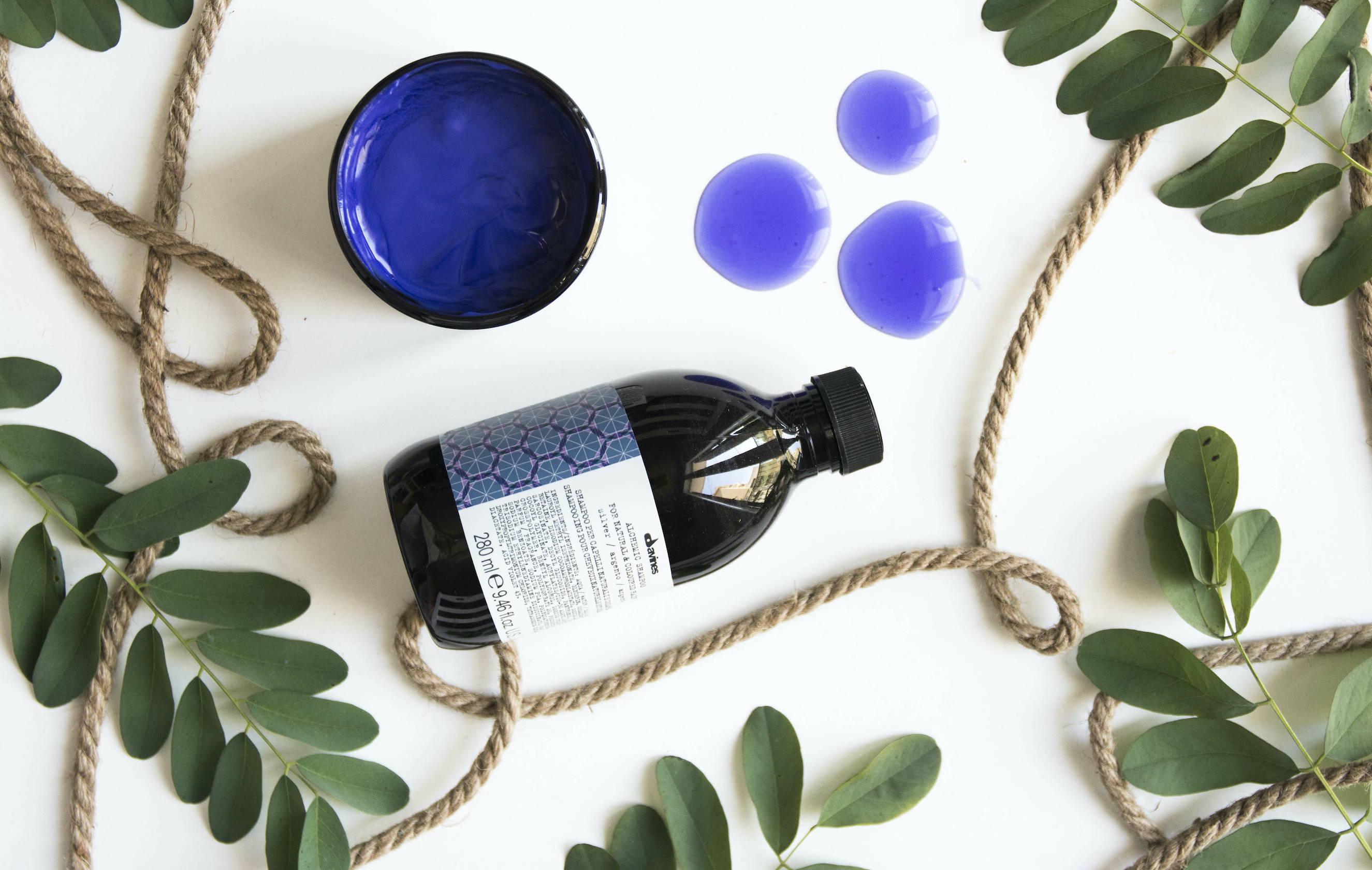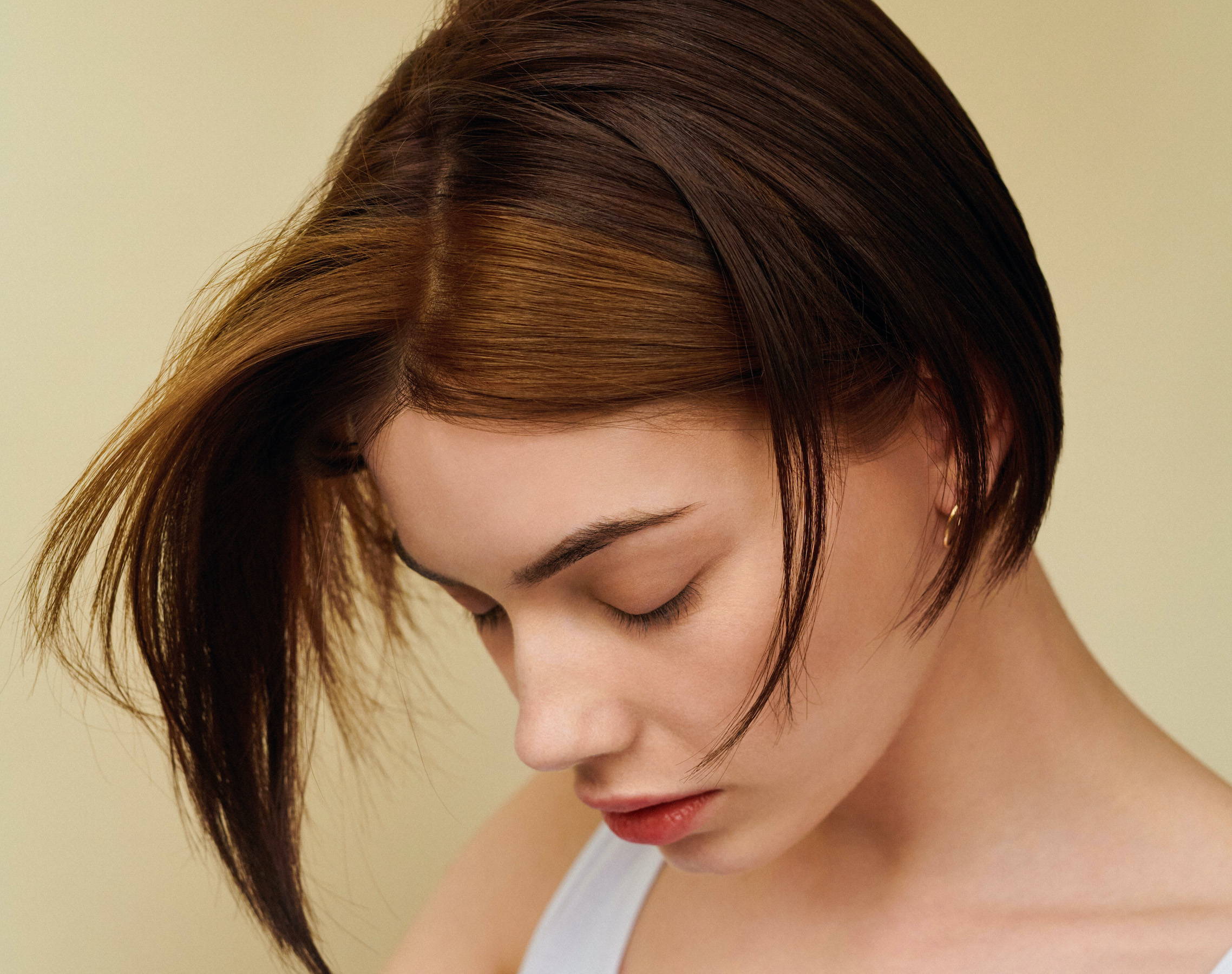Free Carbon Neutral Shipping On Orders $75+, Plus Free Samples!
Buy Now and Pay Later in 4-interest free installments with Klarna
Free Carbon Neutral Shipping On Orders $75+, Plus Free Samples!
Buy Now and Pay Later in 4-interest free installments with Klarna
Rendre la beauté durable
We Are Circular
Lien vers vos collections, vos ventes et même des liens externes.
Refer Your Friends and Get a Free Gift!
When it comes to getting rid of brassiness, purple shampoo is the most valuable hair product in your routine. If you lighten your hair, even in the form of highlights, preserving the life of your color in between salon visits should be a priority. Purple shampoo keeps your lightened hair vibrant longer by neutralizing brassiness. And it works on both blonde and brown hair. Brassiness refers to those unwanted yellow tones that emerge in hair that's been lightened. Everything from natural fading to UV rays, pollution, chlorine and mineral impurities in the water can contribute to brassiness. But using purple shampoo on color-treated brassy tones color-corrects your hair's hue, restoring it to a neutral brightness with cooler tones. So, if you have lightened blonde or brown hair, what should you look for in a purple shampoo? We’re breaking down everything you need to know about adding a purple shampoo to your hair care routine ahead.
Purple shampoo acts like a toner to neutralize unwanted brassy tones on lighter hair. A purple toning shampoo deposits pigment into your strands every time you wash, adjusting your hair’s tone so that it stays as close to the desired pigment as possible. But why purple pigment? Well purple falls directly opposite yellow on the color wheel, which means purple pigment can offset or neutralize yellow tones. Purple shampoo can help neutralize yellow, orange, and brassy tones in hair that is blonde, platinum, silver, pastel, beige, gray, as well as brown hair. It’s important to note that the pigment in purple shampoo isn't a lightener or hair dye but a gentle toner that works overtime. So it can’t darken your hair or make it any lighter. For this reason, if your hair tone is too dark, it won’t make it any brighter.

So why do you need to use purple shampoo if you're not a blonde? Well, even brown hair that’s been lightened can start to show unwanted warm tones and brassiness: this happens especially on balayage and ombre hair, as well as on hair that’s been dyed multiple times before. As color-treated strands become dry and damaged, they have a harder time holding on to color. Fading occurs and the underlying warmer hues are revealed. Purple shampoo works the same way to eliminate brassiness on brown hair as it does on blonde. It helps to prevent color fade, while emphasizing shine, keeping brown hair vibrant and rich. Using purple shampoo on brown hair regularly will take out any unwanted warm tones in your strands.
How often you use purple shampoo depends on your hair type, color and shade. But keep in mind that purple shampoo isn’t a replacement for your regular shampoo, and should only be used a few times a week. Eliminating too much yellow will make your hair visually appear darker, which defeats the purpose of lightning it in the first place. If it’s your first time using it, it’s best to stick to just once a week. Use a shampoo for color-treated hair the rest of the week and slowly increase how many times you use it until you find your perfect shade. A good rule of thumb is to use purple shampoo once every third wash. But if you’ve been in the sun or feel like your tone is too brassy, use purple shampoo until you get your desired results.
Unlike other types of shampoo, you don’t wash the purple out right away. You need to let it sit and do its job first. Start by wetting your hair gently massage a quarter sized amount of shampoo into your hair, from root to tip. Pay special attention to your ends, which are more porous and change tones more easily. Be sure to focus on any problem areas as you go, including brassy or yellow strands. If you have brunette or blonde hair with warm tones, leave it on for 1-3 minutes; neutral brunette or blonde hair, leave it on for 3-5 minutes; or brunette or blonde hair with cool tones, leave it on for 5-15 minutes. Once you let it sit for the appropriate amount of time, you can rinse it out thoroughly with cool or lukewarm water. Follow with a conditioner for color-treated hair or a purple conditioner. However, you should only use a purple conditioner with your purple shampoo if you want a pale color or more ashy tone.

courtesy of Davines Hair Art Director Tom Connell
Purple shampoo can work to counteract unwanted yellow, orange, and brassy tones on lightened blonde and brown hair in-between visits to your colorist. It can even help to disguise the line of demarcation as your roots come in for a more natural grow-out period. Purple shampoo is the perfect product for anyone looking to maintain their vibrant, fresh from the salon, lightened hair for weeks. That said, purple shampoo on its own, isn't a lightener or hair dye. So it can’t darken your hair or make it any lighter. For this reason, if your hair tone is too dark, it won’t make it any brighter. Similarly, if the hair wasn’t lifted light enough in the first place, trying to tone it with purple shampoo can make it look muddy. In this case, it's best to go back to the salon and get it redone to your likeness.
Chemically processing your strands takes a toll on them, so in addition to using a purple shampoo to neutralize brassiness, there’s a few more key products you should be using to keep your hair healthy and preserve the life of your color in between salon appointments. If you're experiencing hair loss or thinning, rotate in a stimulating shampoo to help encourage new hair growth while reinforcing brittle hair, and load up on lots of hydrating hair products. In addition, add a weekly hair mask for colored hair into the mix to keep your strands soft and color vibrant. Protect your color and get healthy hair by using only the highest quality products. All Davines formulas are free of harmful toxins and are made with renewable energy and packaging that minimizes the environmental impact. Our hair care isn’t just good for your hair, it’s good for the planet.
by Jaclyn LaBadia, featured contributor
S’abonner pour rester à l’affut des ventes et promotions, les lancements de nouveaux produits et bien plus…
Abonnez-vous à notre newsletter pour bénificier de la livraison gratuite sur votre première commande.
La soumission de ce formulaire confirme que vous acceptez de recevoir les avis de lancement, les promotions et les nouvelles marketing de Davines North America Inc. par courriel.



Laisser un commentaire
Les commentaires sont approuvés avant leur publication.